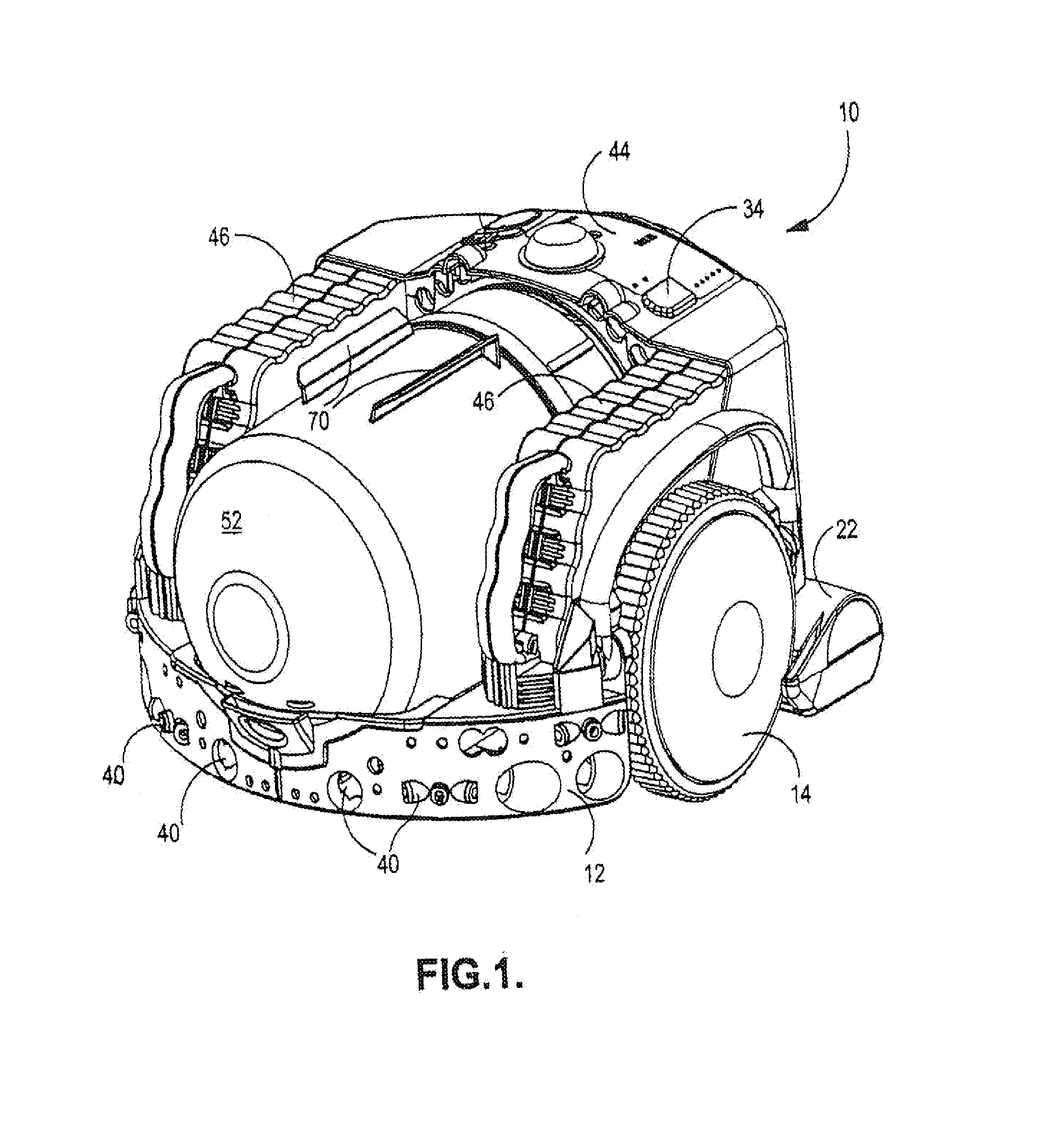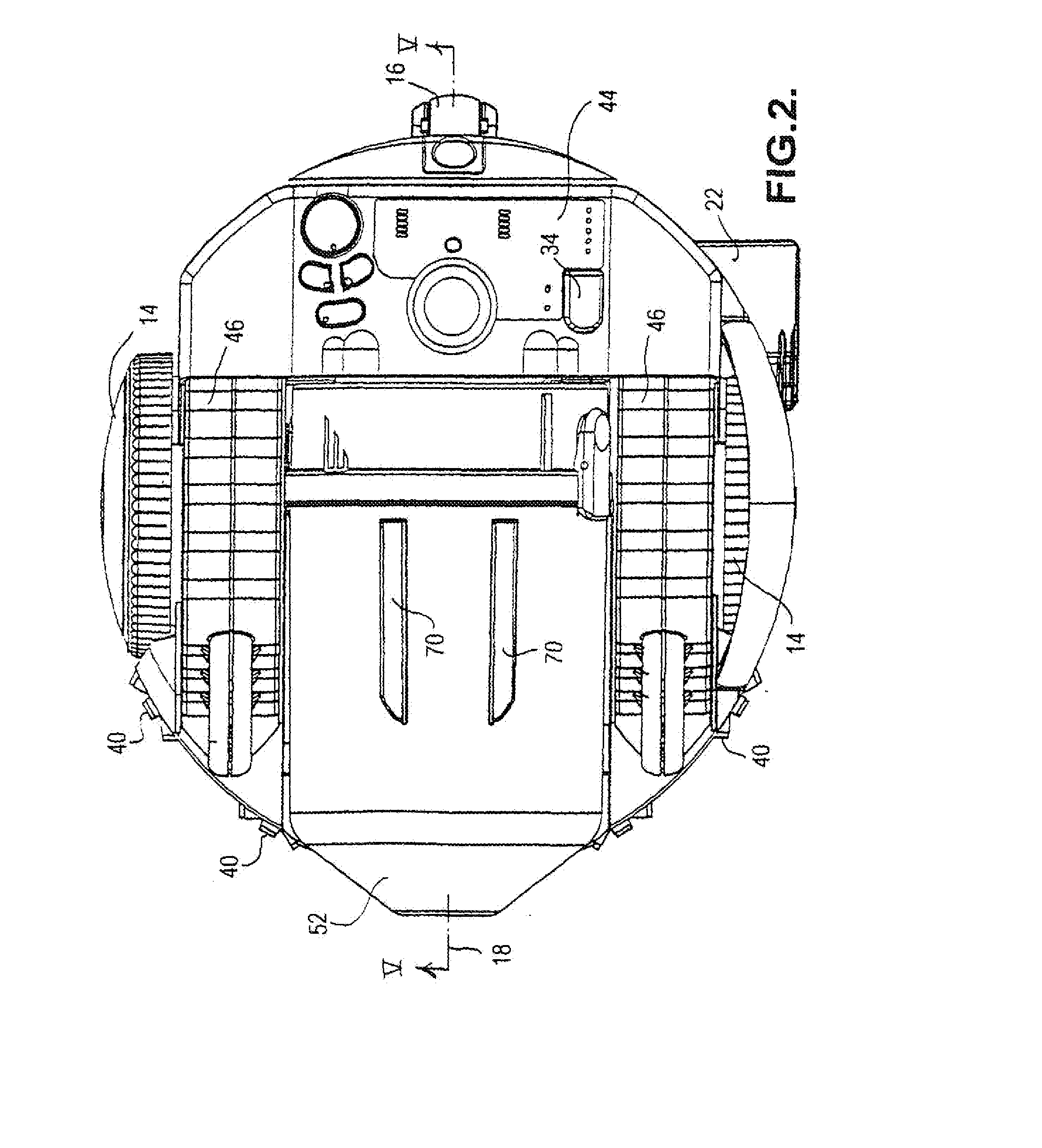Autonomous vacuum cleaner
a vacuum cleaner and autonomous technology, applied in the field of autonomous vacuum cleaners, can solve the problems of affecting the cleaning efficiency of the machine over time, and the cleaning performance tends to be less than satisfactory, so as to improve the cleaning efficiency of the appliance, reduce the pressure drop in the region, and increase the dust capacity without increasing the height of the vacuum cleaner.
- Summary
- Abstract
- Description
- Claims
- Application Information
AI Technical Summary
Benefits of technology
Problems solved by technology
Method used
Image
Examples
Embodiment Construction
[0018]Referring firstly to FIGS. 1 to 5, a vacuum cleaner 10 has a supporting chassis 12 which is generally circular in shape and is supported on two driven traction wheels 14 and a castor wheel 16. The chassis 12 is preferably manufactured from high-strength moulded plastics material, such as ABS, but can equally be made from metal such as aluminium or steel. The chassis 12 provides support for the components of the vacuum cleaner 10 which will be described in more detail below.
[0019]The driven wheels 14 are arranged diametrically opposed at either side of the chassis 12, and therefore share an axis that is perpendicular to the longitudinal axis of the vacuum cleaner 10 which, it should be noted, is oriented along the direction of travel of the vacuum cleaner 10. Each driven wheel 14 is moulded from a high-strength plastics material and carries a comparatively soft, ridged band around its circumference to enhance the grip of the wheel when the vacuum cleaner 10 is traversing a smoo...
PUM
 Login to View More
Login to View More Abstract
Description
Claims
Application Information
 Login to View More
Login to View More - R&D
- Intellectual Property
- Life Sciences
- Materials
- Tech Scout
- Unparalleled Data Quality
- Higher Quality Content
- 60% Fewer Hallucinations
Browse by: Latest US Patents, China's latest patents, Technical Efficacy Thesaurus, Application Domain, Technology Topic, Popular Technical Reports.
© 2025 PatSnap. All rights reserved.Legal|Privacy policy|Modern Slavery Act Transparency Statement|Sitemap|About US| Contact US: help@patsnap.com



